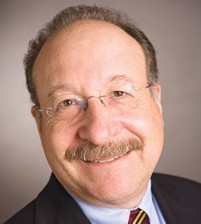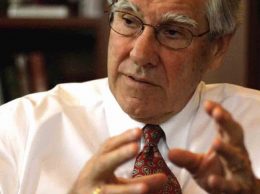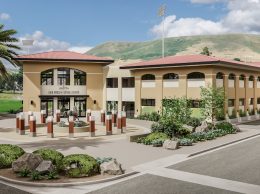Dubroff: Creating CSU satellite campus makes sense for Santa Maria

Henry Dubroff
Sometimes it only takes a single slide to make your point.
So when Allan Hancock College President Kevin Walthers began his May 6 talk in Santa Maria, the first image was an eye-opener. It said “California’s Higher Education Desert” and 300 North Santa Barbara County leaders who attended the UCSB Economic Forecast Summit early that morning knew exactly what he meant.
Walthers is a good academic and careful researcher, so he backed up his statement with the numbers. With more than 13,000 students, Hancock is the largest community college in the state without direct access to a California State University campus for its graduates.
Cal Poly San Luis Obispo doesn’t count because it has a statewide mission — something that’s made it a star of California’s public higher education system. Technically, the regional CSU that serves Hancock is CSU Channel Islands, but that campus is 110 miles away, Walthers said.
With Cuesta College facing similar issues with the distance to CSU Bakersfield, the Central Coast is at the epicenter of Walther’s “higher education desert.” More than 20,000 students are not within 100 miles of a CSU campus that offers automatic transfers, versus about 12,000 students in the rest of California.
His solution for the Santa Maria Valley, which met with nods of approval, is to create a satellite campus that opens the doors to public and private institutions to offer a “two plus two” path to an undergraduate degree and perhaps an MBA or other master’s programs.
Demand is greatest, he argued, in business-related fields such as marketing, management, administration, information/tech systems, agribusiness and computer science. He’s also got a natural partner in the PCPA Pacific Conservatory Theatre, which could benefit from four-year degree programs in arts and design.
“It could help us attract business to the area,” Walthers told me in a phone conversation after his talk. “I’m committed to it and my board is committed.”
During a press conference at Channel Islands on May 10, CSU Chancellor Tim White acknowledged the shortfall facing California’s public higher ed system. He said some 30,000 high school graduates who are otherwise qualified to enter a CSU find there isn’t a spot for them.
At Cuesta College in San Luis Obispo, President Gil Stork has been trying to bootstrap his way to finding undergraduate degree opportunities. He told me via an email exchange that Cuesta has the biggest feeder program to Cal Poly but he also keeps looking for ways to provide four-year degree programs for students who would “suffer hardship” if they had to transfer out of the area to a CSU campus.
Since 2001, he’s operated a “University Center” on campus that hosts programs, notably from Columbia College, for bachelor’s and MBA degrees. He’s also got an agreement with CSU Monterey Bay to offer a nursing undergraduate degree, mirroring a program that CI, Santa Barbara City College and Cottage Health put together years ago.
Walthers said he has a framework for a plan that could be up and running in two years if the CSU system would sign on.
“It’s not a full-blown Cal State campus, but a place to offer two-plus and graduate programs,” he said, adding that he’s got land and one underutilized building that could be used to give the program a head start.
The idea would be to serve the Five Cities area of south SLO County and the Santa Ynez Valley.
He said he’s also got staffing partly solved – many of his existing faculty already meet four-year standards; some teach at Cal Poly and one is a faculty lecturer at UC Santa Barbara.
“The resources are here,” he said, adding frankly that he realizes “it’s not something that’s going to happen overnight.”
Walthers’ model is the satellite campus that CSU San Bernardino built in Palm Desert to serve the growing population in the Coachella Valley that can’t afford to commute over the pass to get an undergraduate degree.
Fixing the Central Coast’s higher education desert will take persistence and probably more local funding than the leadership of Santa Maria realizes. But Walthers is courageous in recognizing the problem and offering a solution. It’s an opportunity that should not be passed up.
• Reach Editor Henry Dubroff at [email protected].












